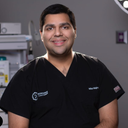When a mini-facelift is done are the muscles tightened or just the skin. And how much is the price of the average mini facelift vs a full facelift
Answers (13)
From board-certified doctors and trusted medical professionals
Dr. Jonathan Kulbersh, MD

Dr. Jonathan Kulbersh, MD
Board Certified Facial Plastic Surgeon
Answer
Dr. Jason Emer, MD

Dr. Jason Emer, MD
Dermatologic Surgeon, Board Certified in Dermatology
Answer
Dr. Jed H. Horowitz, MD, FACS

Dr. Jed H. Horowitz, MD, FACS
Board Certified Plastic Surgeon
Answer
Dr. Amir Nakhdjevani, MBBS, MRCS, FRCS(Plast)

Dr. Amir Nakhdjevani, MBBS, MRCS, FRCS(Plast)
Specialist Registered Plastic Surgeon
Answer
Dr. Paul Lanfranchi, DO, FAOCOO

Dr. Paul Lanfranchi, DO, FAOCOO
Board Certified Facial Plastic Surgeon
Answer
Dr. Corey S. Maas, MD

Dr. Corey S. Maas, MD
Board Certified Facial Plastic Surgeon
Answer
Dr. Mike Majmundar, MD

Dr. Mike Majmundar, MD
Board Certified Facial Plastic Surgeon
Answer
Dr. Evan Ransom, MD, FACS

Dr. Evan Ransom, MD, FACS
Board Certified Facial Plastic Surgeon
Answer
Dr. Pamela Henderson, MD

Dr. Pamela Henderson, MD
Board Certified Facial Plastic Surgeon
Answer
Dr. Lee A. Gibstein, MD
Dr. Lee A. Gibstein, MD
Board Certified Plastic Surgeon
Answer
More Mini Facelift Questions
See all Mini Facelift Q&AWE SEND PRETTY
EMAILS
What’s trending? Who’s turning heads? Which TikTok myths need busting? We’ve got you. No fluff, no gatekeeping—just real talk. Get our free, unfiltered newsletter.